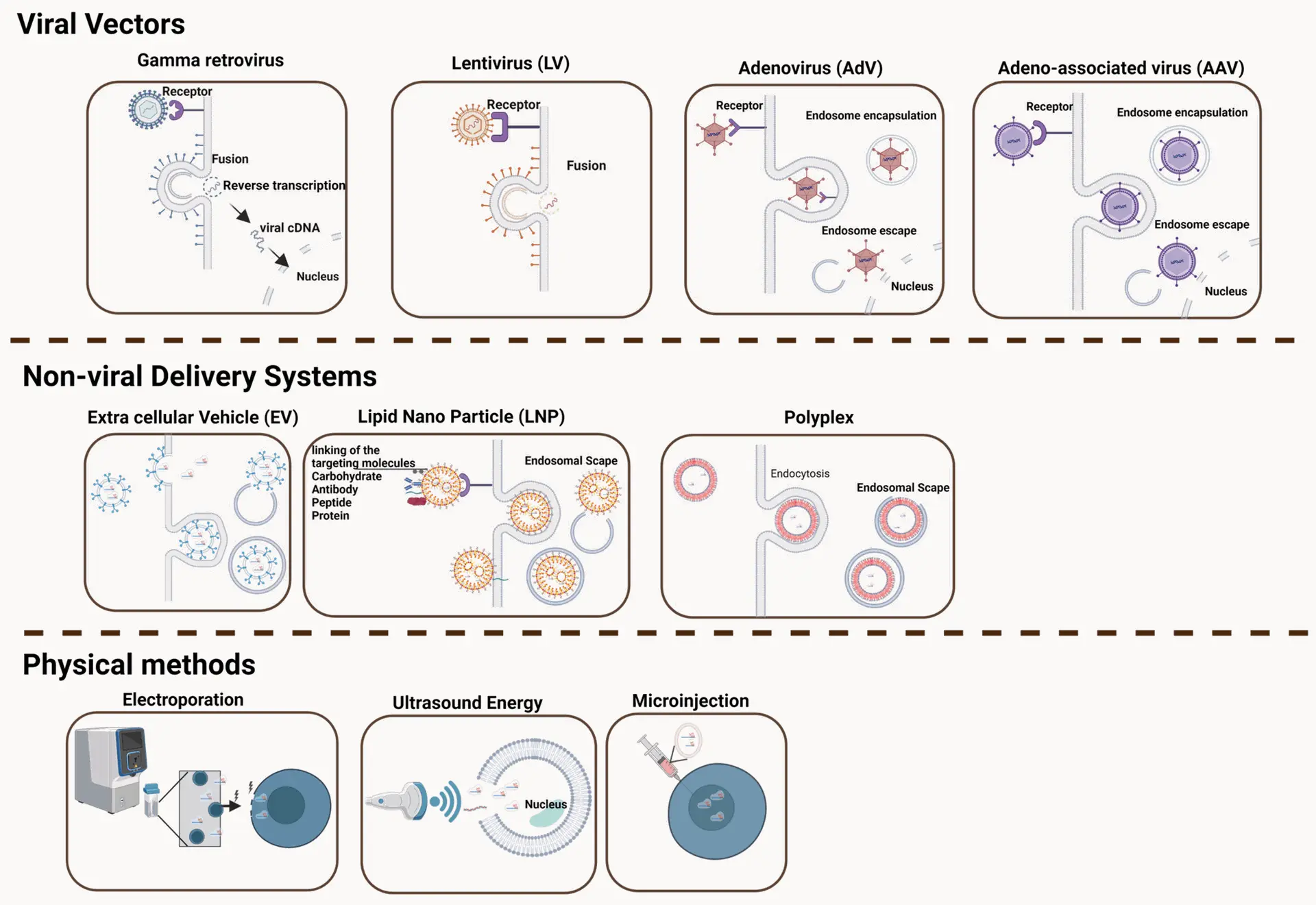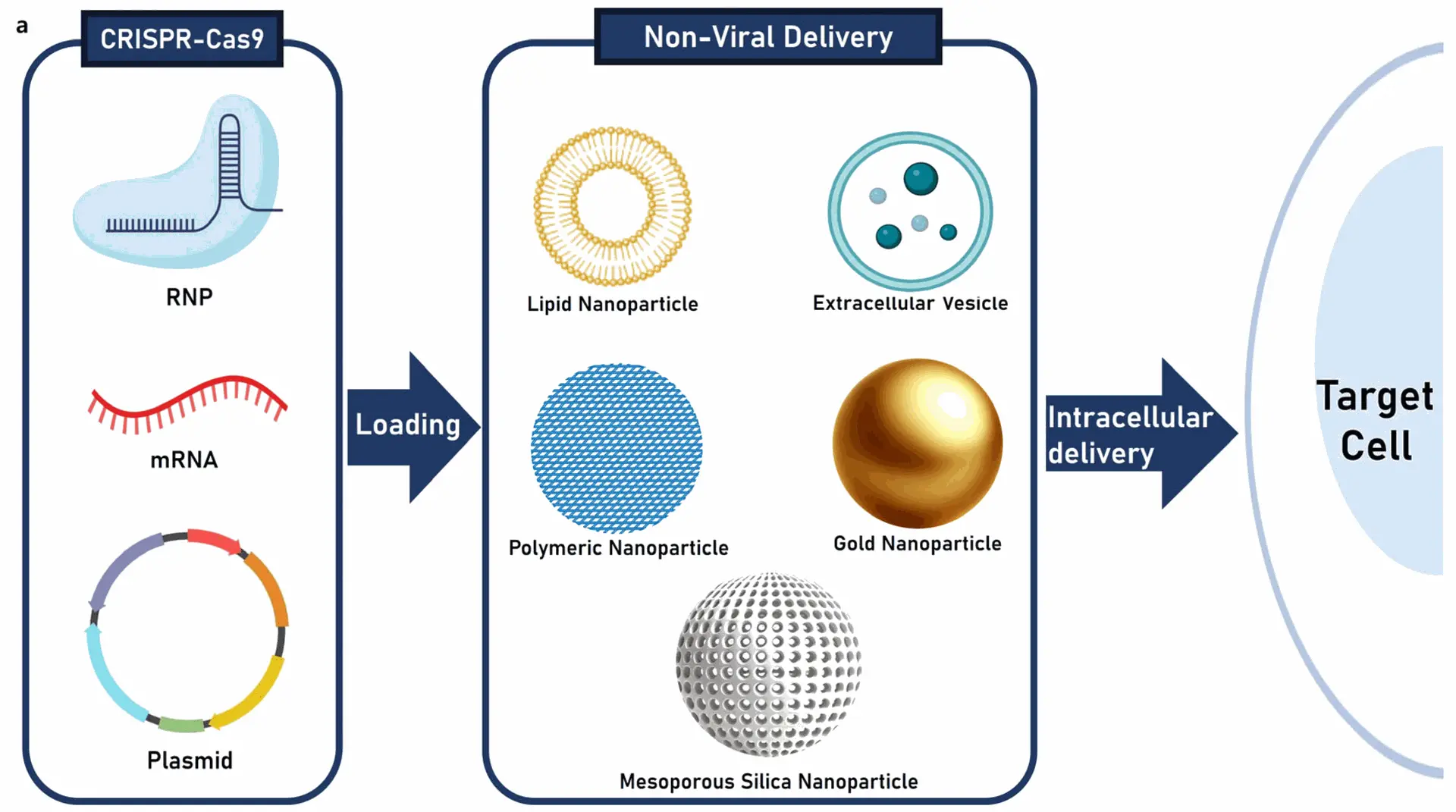Viral Delivery Systems: Nature’s Efficient Vectors
Lentiviruses
Lentiviral vectors, derived from HIV, can integrate into the host genome, allowing for stable gene expression. They are particularly useful for:
- Engineering T cells in CAR-T therapies
- Ex vivo gene editing of hematopoietic stem cells
Oncolytic Viruses
These are genetically modified viruses that selectively infect and kill cancer cells while delivering therapeutic genes. They also stimulate an anti-tumor immune response, making them dual-function agents.
Examples include:
- Talimogene laherparepvec (T-VEC) for melanoma
- Engineered adenoviruses for solid tumors
Non-Viral Delivery Systems: Safer and More Customizable
1
Lipid Nanoparticles (LNPs)
LNPs have gained prominence following their success in mRNA COVID-19 vaccines. In cancer therapy, LNPs are used to deliver:
- mRNA encoding tumor antigens or immune-modulating proteins
- CRISPR components for gene editing
- siRNA for gene silencing
2
Polymeric Nanoparticles
These synthetic polymers can encapsulate DNA, RNA, or proteins. Advantages include:
- Tunable size and surface properties
- Controlled release profiles
- Co-delivery of multiple agents (e.g., gene therapy + chemotherapy)
3
Exosomes and Cell-Derived Vesicles
Exosomes are natural nanocarriers secreted by cells. As delivery systems, they offer:
- Biocompatibility and low immunogenicity
- Intrinsic targeting properties based on surface markers
- Ability to cross biological barriers, such as the blood-brain barrier
These vesicles are promising for delivering RNA-based therapies and are under investigation for glioblastoma, pancreatic, and breast cancers.
Emerging Hybrid Systems: Combining the Best of Both Worlds
To overcome the limitations of individual platforms, researchers are developing hybrid delivery systems, such as:

